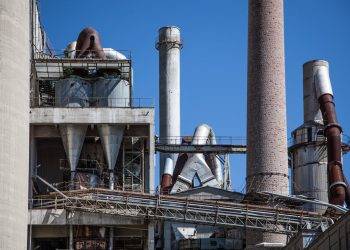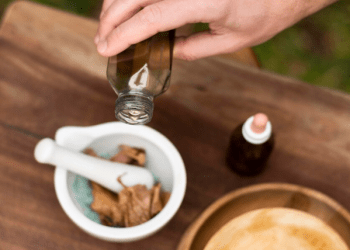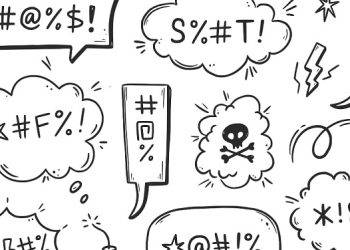As we face increasingly extreme weather patterns, the importance of caring for your turf during a heatwave cannot be overstated. One of the most crucial steps is to adjust your watering schedule. Instead of frequent, light waterings, it’s more effective to water deeply and infrequently to encourage deep root growth and resilience. Additionally, consider mowing your lawn at a slightly higher setting to provide shade and protect the soil from excessive evaporation.
Furthermore, applying a layer of mulch around trees and other landscaping can help retain moisture and regulate soil temperature. This simple step can make a significant difference in preserving the health of your turf during scorching temperatures. Lastly, be mindful of foot traffic on the grass during heatwaves as compacted soil can inhibit water absorption. Encourage family members or visitors to stick to designated pathways to minimize stress on the turf. By implementing these strategies, you’ll be better equipped to maintain a vibrant lawn even in the face of extreme heat.
Understanding the Impact of Heat on Turf
The impact of heat on turf can be profound, affecting not only the appearance but also the overall health of your lawn. Beyond mere aesthetics, sustained high temperatures can cause grass to become stressed and even lead to irreversible damage if not properly managed. Understanding how heat affects turf is crucial in order to protect and maintain a healthy, vibrant lawn throughout a heatwave.
During periods of intense heat, turfgrass faces multiple challenges such as increased water requirements, susceptibility to diseases like brown patch or dollar spot, and reduced ability to recover from foot traffic or other stressors. Additionally, excessive heat can result in reduced root growth and ultimately weaken the entire plant system. By comprehending these impacts, homeowners can take proactive measures to support their turf during times of extreme temperature challenge.
In essence, recognizing the effects of heat on turf goes beyond visual appearances; it requires an understanding of the physiological processes at play within the grass plants themselves. By grasping these intricacies and implementing appropriate maintenance strategies tailored with the best turf for the Goulburn area, you can combat the impact of heat on turfscape health—such as adjusting watering schedules, utilizing specialized fertilizers with added nutrients for stress tolerance and disease resistance—one can ensure their lawn remains robust even in challenging climatic conditions.
Watering Techniques and Schedule
Watering your turf during a heatwave requires a strategic and mindful approach. Instead of sticking to a fixed schedule, consider adjusting your watering routine based on the specific needs of your lawn. Early morning watering is often recommended as it allows the grass to absorb moisture before the sun’s intensity increases, reducing water loss through evaporation. Additionally, deep and infrequent watering promotes healthier root growth by encouraging roots to grow deeper into the soil in search of moisture.
Furthermore, understanding your turf’s individual requirements can help tailor your watering technique. For instance, certain areas of your lawn may dry out faster than others due to factors such as shade or soil composition. By recognizing these variations, you can adjust your watering schedule accordingly to ensure all areas receive adequate moisture. Lastly, consider investing in smart irrigation systems that utilize weather data and soil sensors to adjust watering schedules automatically. These systems can optimize water usage and ensure your turf receives the right amount of hydration precisely when it needs it most.
Mowing Tips for Heatwave Conditions
During a heatwave, it’s crucial to adjust your mowing routine to ensure the health of your turf. Firstly, consider raising the cutting height of your mower to allow the grass to retain more moisture and develop deeper roots. This can help protect the turf from heat stress and reduce water loss. Additionally, consider mowing during the cooler parts of the day, such as early morning or late evening, to minimize stress on the grass.
When mowing in heatwave conditions, it’s important not to remove more than one-third of the grass blade length at any one time, just like with most Australian indoor plants. Removing too much grass can place additional stress on an already struggling lawn. Another valuable tip is to keep mower blades sharp as dull blades can tear rather than cleanly cut the grass, leaving it vulnerable to further damage from high temperatures. Finally, consider leaving clippings on the lawn as they can provide natural mulch and help retain soil moisture during dry periods.
By implementing these mowing tips for heatwave conditions, you can effectively care for your turf and maintain a healthy lawn even during challenging weather circumstances.
Fertilization and Nutrient Management
Fertilization and nutrient management are crucial components of maintaining a healthy turf, especially during a heatwave. When temperatures soar, the demand for essential nutrients increases as the grass works harder to survive. Proper fertilization can help replenish these nutrients, promoting stronger roots and enhancing heat tolerance. It’s important to choose a fertilizer with a balanced blend of nitrogen, phosphorus, and potassium to support overall growth while also considering micronutrients like iron and magnesium that aid in stress resistance.
Nutrient management involves not only the application of fertilizers but also the careful monitoring of soil pH levels and nutrient deficiencies. During a heatwave, it’s vital to ensure that your turf receives the right amount of water-soluble nutrients to prevent excess stress. Implementing slow-release fertilizers can also provide long-term benefits by sustaining nutrient availability throughout prolonged periods of high temperatures. By adopting sustainable nutrient management practices tailored to your specific turf needs, you can effectively fortify your lawn against the detrimental effects of extreme heat while promoting its overall health and vitality in any weather condition.
Shade and Sun Protection Measures
In the midst of a scorching heatwave, shade and sun protection measures are crucial for maintaining the health and vitality of your turf. Consider planting trees or installing shade sails to create sheltered areas that provide relief from the relentless heat. These shaded spots not only offer respite for your turf but also provide a cool, inviting space for outdoor activities.
Furthermore, incorporating sun-reflective materials into your landscape design can effectively reduce heat absorption and prevent turf damage. The use of light-colored mulch or reflective ground covers helps to bounce sunlight away from the soil, minimizing heat stress on the grass. Additionally, strategic placement of pergolas or trellises with climbing plants can offer natural shade while enhancing the aesthetic appeal of your outdoor space. By implementing these shade and sun protection measures, you can ensure that your turf remains lush and resilient even in the face of extreme temperatures.
Dealing with Heat Stress and Damage
Dealing with heat stress and damage in your turf requires a proactive approach to ensure its health and vitality. One effective way to mitigate the impact of high temperatures is by adjusting the irrigation schedule. Deep, infrequent watering encourages the growth of deep roots, making the turf more resilient to heat stress. Additionally, consider incorporating drought-resistant grass species into your lawn mix. These varieties are better equipped to withstand prolonged periods of high temperatures and require less water, contributing to overall water conservation efforts.
Another crucial aspect of caring for your turf during a heatwave is proper mowing techniques. It’s essential to raise the mower blades to allow grass to grow slightly longer during hot weather, providing shade for the soil and reducing water loss through evaporation. Furthermore, avoid mowing during extreme temperature peaks as this can further stress the grass. By responsibly adjusting maintenance practices and leveraging nature’s own mechanisms for resilience, you can effectively safeguard your turf from heat-related damage and promote a healthy, lush lawn all season long.
Conclusion: Summary of Key Points
In conclusion, caring for your turf during a heatwave requires proactive and strategic measures to ensure its health and vitality. First, it is essential to prioritize proper hydration by watering the grass deeply and infrequently, allowing the roots to grow deeper into the soil. Additionally, being mindful of the timing of watering can optimize absorption and minimize water wastage. Secondly, implementing smart mowing practices such as raising the mower blades to a higher setting can help shield the grass from stress and prevent excessive moisture loss. Lastly, fostering overall turf resilience through appropriate fertilization, aeration, and avoiding heavy foot traffic during extreme heat can fortify its ability to withstand stressful conditions.
Understanding these key points is pivotal in preserving your turf’s lush appearance and resilience during a heatwave. It’s crucial to view these actions not as distinct tasks but as part of an integrated approach toward nurturing healthy, sustainable lawn care habits. By embracing a holistic perspective on turf maintenance under challenging weather conditions, we not only enhance its beauty but also contribute positively to the ecological balance within our immediate environment. Therefore, it’s imperative that homeowners continuously educate themselves on effective methods tailored specifically for their location’s climatic demands in order to protect their beloved turfs from adverse effects caused by heatwaves.








